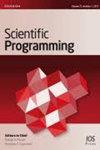一种新的深度神经网络激活函数
4区 计算机科学
Q3 Computer Science
引用次数: 0
摘要
在深度神经网络中,激活函数是一个重要的组成部分。目前最流行的激活函数是Sigmoid、Sin、校正线性单元(ReLU)和ReLU的一些变体。然而,他们每个人都有自己的弱点。为了提高网络拟合和泛化能力,设计了一种新的激活函数TSin。TSin函数的基本设计思想是将Sin函数逆时针旋转45°,然后对其进行微调,使其具有激活函数所需的多种更好的性质,如非线性、全局可微性、不饱和性质、零中心性质、单调性、拟恒等变换性质等。第一部分是TSin函数的理论推导。然后设计了三个实验进行性能测试。结果表明,与一些流行的激活函数相比,TSin在训练稳定性、收敛速度和收敛精度方面具有优势。TSin的研究不仅为深度学习中的激活函数提供了一种新的选择,也为未来的激活函数设计提供了新的思路。本文章由计算机程序翻译,如有差异,请以英文原文为准。
A Novel Activation Function of Deep Neural Network
In deep neural networks, the activation function is an important component. The most popular activation functions at the moment are Sigmoid, Sin, rectified linear unit (ReLU), and some variants of ReLU. However, each of them has its own weakness. To improve the network fitting and generalization ability, a new activation function, TSin, is designed. The basic design idea for TSin function is to rotate the Sin function 45° counterclockwise and then finetune it to give it multiple better properties needed as an activation function, such as nonlinearity, global differentiability, unsaturated property, zero-centered property, monotonicity, quasi identity transformation property, and so on. The first is a theoretical derivation of TSin function by formulas. Then three experiments are designed for performance test. The results show that compared with some popular activation functions, TSin has advantages in terms of training stability, convergence speed, and convergence precision. The study of TSin not only provides a new choice of activation function in deep learning but also provides a new idea for activation function design in the future.
求助全文
通过发布文献求助,成功后即可免费获取论文全文。
去求助
来源期刊

Scientific Programming
工程技术-计算机:软件工程
自引率
0.00%
发文量
1059
审稿时长
>12 weeks
期刊介绍:
Scientific Programming is a peer-reviewed, open access journal that provides a meeting ground for research results in, and practical experience with, software engineering environments, tools, languages, and models of computation aimed specifically at supporting scientific and engineering computing.
The journal publishes papers on language, compiler, and programming environment issues for scientific computing. Of particular interest are contributions to programming and software engineering for grid computing, high performance computing, processing very large data sets, supercomputing, visualization, and parallel computing. All languages used in scientific programming as well as scientific programming libraries are within the scope of the journal.
 求助内容:
求助内容: 应助结果提醒方式:
应助结果提醒方式:


